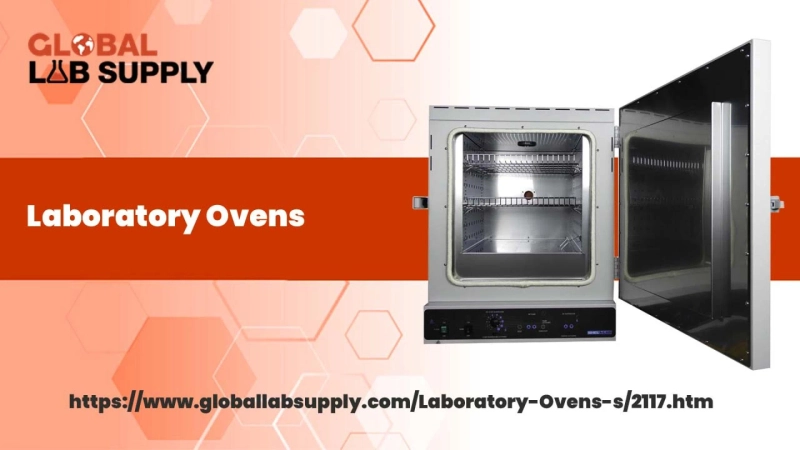Convection ovens are widely used in both residential and commercial settings, offering efficient and consistent cooking results. These ovens utilize a unique heating method that relies on the principles of convection, which involves the transfer of heat through the movement of air. Global Lab Supply, a trusted provider of laboratory equipment, understands the importance of understanding the science behind convection ovens. In this article, we will take a closer look at the science behind convection ovens and explore their benefits and applications.
Understanding Convection:
Convection is a mode of heat transfer that occurs through the movement of a fluid, such as air or liquid. In the case of convection ovens, the fluid is air. There are two types of convection: natural convection and forced convection.
Natural Convection: Natural convection occurs when heat causes air to rise and cooler air to fall, creating a natural circulation. This is commonly observed in everyday scenarios, such as when warm air rises above a heater.
Forced Convection: Forced convection involves the use of external mechanisms, such as fans, to actively circulate the air. In convection ovens, fans help distribute the heated air evenly, resulting in more efficient and uniform cooking.
The Role of Fans:
Fans in convection ovens play a crucial role in the cooking process. They circulate the hot air throughout the oven cavity, ensuring that heat is evenly distributed to all sides of the food. This eliminates hot spots and promotes faster and more consistent cooking.
Benefits of Convection Ovens:
Convection ovens offer several benefits over traditional ovens:
Faster Cooking: The circulating hot air in convection ovens enables faster cooking times compared to conventional ovens. This is particularly advantageous for busy kitchens and time-sensitive cooking processes.
Even Cooking: The even distribution of heat in convection ovens ensures that food is cooked uniformly. This results in consistent browning, crispiness, and texture across the entire dish.
Energy Efficiency: Convection ovens are designed to maximize energy efficiency by reducing cooking time and utilizing a lower temperature setting compared to conventional ovens. This can lead to energy savings in the long run.
Applications of Convection Ovens:
Convection ovens find applications in various settings, including:
Residential Kitchens: Convection ovens are increasingly popular in home kitchens, offering improved cooking performance for baking, roasting, and broiling.
Commercial Kitchens: Restaurants, bakeries, and other food service establishments rely on convection ovens for their efficient and consistent cooking capabilities. They are suitable for large-scale food production.
Laboratory and Industrial Settings: Convection ovens are also used in laboratory and industrial settings for various applications, such as drying, sterilizing, and heat treatment processes.
FAQs (Frequently Asked Questions):
Q1. Can I use convection ovens for all types of recipes?
Convection ovens are suitable for most recipes, but some adjustments may be required. It is recommended to reduce cooking temperatures by about 25°F (15°C) and decrease cooking times slightly when using a convection oven. This ensures that the food is cooked evenly and prevents overcooking.
Q2. Are convection ovens more expensive than traditional ovens?
Convection ovens generally tend to be slightly more expensive than traditional ovens due to the additional technology and features they incorporate. However, the benefits, energy efficiency, and cooking performance of convection ovens make them a worthwhile investment for many.
Q3. Can I turn off the convection feature in a convection oven?
Yes, most convection ovens allow you to turn off the convection feature, allowing you to use the oven as a traditional oven when desired. This versatility allows you to choose the appropriate cooking method for different recipes.
Q4. Are convection ovens suitable for baking delicate pastries?
Convection ovens can be used for baking delicate pastries, but some adjustments may be needed. It is recommended to reduce the cooking temperature and closely monitor the baking process to avoid over-browning or drying out the pastries.
Q5. How do I clean a convection oven?
Cleaning a convection oven is similar to cleaning a traditional oven. Follow the manufacturer's instructions for cleaning and maintenance, which usually involve removing the racks and using mild cleaning agents to wipe down the interior. Regular cleaning and maintenance are important to ensure optimal performance and longevity of the oven.
Conclusion:
Understanding the science behind convection ovens helps us appreciate their efficiency and cooking performance. The circulation of heated air achieved through convection and the use of fans in convection ovens result in faster, more consistent, and energy-efficient cooking. Whether in residential kitchens, commercial establishments, or laboratory settings, convection ovens have become valuable tools for various cooking and heating applications. Global Lab Supply offers a range of Lab convection ovens designed for laboratory and industrial use, ensuring reliable and efficient heat transfer processes. By harnessing the power of convection, these ovens provide enhanced cooking performance and consistent results, making them a valuable addition to any kitchen or laboratory.
Original Sources: https://wakelet.com/wake/2U3Rv3pLZq8zXA8lbEAnl


